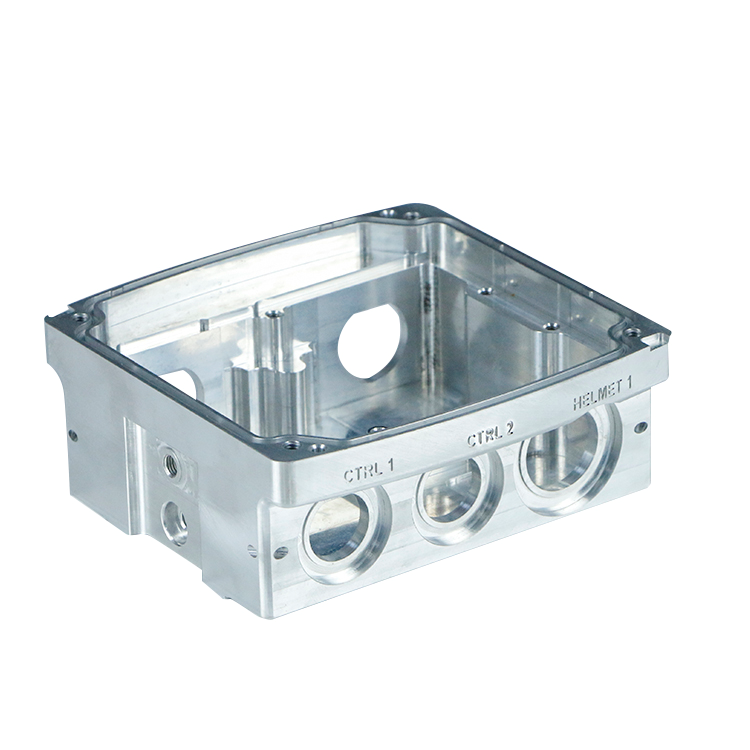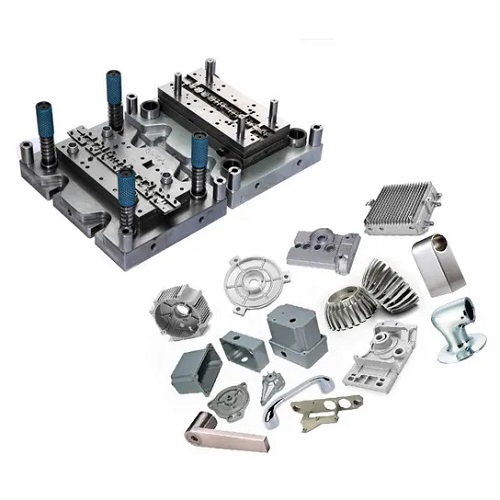What is aluminum injection molding?
Aluminum injection molding AIM is based on the unique injection molding technology used to create aluminum molds (whether prototypes or finished items). It is a quick prototyping alternative to injection molding and is frequently utilized in automotive, aviation, and industrial industries.
Aluminum injection molding is suitable because it allows for the simple fabrication of complicated items with few pieces. Furthermore, it assures product stability, structural integrity, high precision, and a smooth surface. This is due to its properties, such as its ability to efficiently transfer heat from the mold and enable faster production.

Aluminum injection molding process
The powder and binder are combined uniformly first, and then the mixed material is granulated by the granulator and injected into the developing mold cavity to finish the desired shape. After heating, the combined melt has good fluidity, which aids in shaping the product during injection and fully maintains the product’s density homogeneity. After forming, the goods must be degreased and sintered in a sintering furnace, with some products requiring additional post-treatment.
Aluminum injection molding vs. steel injection molding
Traditional injection molding uses steel injection molds to generate a large number of parts. Steel molds, on the other hand, have some limitations. As a result, another method, such as aluminum molding, is necessary.
Several characteristics distinguish aluminum injection molding from steel injection molding. This is based on their characteristics, design, and use rather than the materials used to construct them (aluminum and steel).
Here are some significant distinctions between aluminum injection molding and stainless steel injection molding:
-
Adaptability
Steel dies are not flexible because their hardness is created by heat treatment after critical components of the dice are designed. Aluminum injection molding, on the other hand, is made of a softer substance than steel injection molding.
Its design allows for the creation of mold pieces individually, making it easier to remove and change the prototype.
-
Time to completion
CNC processing technology is used to create the aluminum injection mold. Electrical discharge machining (EDM) is sometimes used when the cavity must have sharp corners. On the other hand, a standard aluminum cavity may be created in roughly 10-15 days because the process requires a mechanical method. There is no need for specialized manufacturing equipment or heat treatment.
The same procedure is used to make steel injection molds. They are, however, costly and require months to produce. This is owing to the stiffness and hardness of steel. Steel’s hardness necessitates the use of specialized manufacturing equipment and heat treatment to increase die life.
-
Mold toughness
Mold robustness is the amounts of pieces a mold can make before corroding or wearing out. This component is heavily influenced by the mold’s design and genetic makeup.
Steel injection molds are tough because they are heat-treated during the production process. They also have few joints, which makes them sturdy and long-lasting. Steel injection molds can thus create millions of pieces.
Aluminum injection molding, on the other hand, is made of aluminum, which is a soft substance when compared to steel. As a result, its mold sturdiness is inferior to that of steel injection molds. Nonetheless, the aluminum alloy is robust enough to ensure mass production of up to 5,000 components.
-
Manufacturing time
The production time is the time it takes from polymer injection to final product launch. It is a crucial aspect of the batch product production process, which is dependent on the material, temperature, and pressure of the mold.
Aluminum injection molding is not able to handle high pressure and temperature. As a result, the average production time for aluminum injection molding is 40-70 seconds. Steel injection molding, on the other hand, can endure higher temperatures and pressures than aluminum injection molding and can create parts in a matter of seconds.
Aluminum Mold Characteristics
Aluminum is useful in molds due to its many properties, which enable the low-cost fabrication of small-batch injection molds. The fundamental characteristics that make it an ideal choice for aluminum injection molding and molds, in general, are as follows.
- The rate of thermal expansion and cold contraction.
The coefficient of thermal expansion of aluminum is very high. As a result, after heating to the proper temperature, it may be quickly cooled, allowing for speedier production.
As a result, it is a key material in the development of items that demand rapid and efficient production. It’s also good for injection molding.
- Metal properties
To achieve workpiece precision, a tool with appropriate mechanical strength and stiffness is required. Aluminum has strong metallic qualities that let it retain its stiffness and strength to some extent. It is extremely pliable, making it an excellent material for tool use.

aluminum molds for injection molding
Advantages of aluminum injection molding
- Cost
In terms of injection mold production costs, aluminum injection mold cost are less expensive than steel injection molds. The entire value of the mold and the return on investment is heavily dependent on how the mold is used. Nonetheless, if all other conditions remain constant, the initial tooling investment in aluminum will be lower.
- Lead
Aluminum injection molding allows for a more rapid path to product production. Steel injection molding can take months to complete, from mold design to final product realization. An aluminum-plastic injection mold, on the other hand, can be created, prototyped, and manufactured in a matter of days.
- Time required for processing
Aluminum injection molding dissipate heat at a significantly faster pace than steel molds. As a result, they can heat up and cool down more quickly. The cooling time in the injection molding process accounts for the full molding cycle. As a result, selecting an aluminum molding technique can shorten the cycle, allowing for faster part production.
- Simple to fix and alter
Damaged or deformed steel molds can be difficult and costly to repair due to the exceptionally high hardness of steel. New molds are frequently the solution. Aluminum injection molds, on the other hand, are built of softer materials and have a detachable and simple design. This function facilitates the correction and modification of faults in aluminum injection molds.
Aluminum injection molding technology is suitable for the production of large quantities and complex parts of various shapes, including some extremely complex three-dimensional shapes, and the products produced do not require machining or only a small amount of processing, which greatly reduces the production cost and greatly improves the work efficiency.
JH MIM aluminum alloy injection molding technique can process and make parts with exceedingly complicated shapes, and the product has consistent organization, high precision, and a smooth surface. And the product quality is consistent, with excellent production efficiency, making it appropriate for mass manufacturing.
AIM has been applied to many industries such as marine aviation, machinery, vehicles, precise instruments, and so on because of the incomparable benefits of machining in precision and work efficiency.
Yes, this is a routine operation for most companies before making an inquiry.
We have metal 3D printing equipment and can provide sample 3D printing.
3D drawings allow engineers to better understand the structure of the product, and 2D documents can provide more information, including materials, tolerances, surface treatment, etc. More detailed information is conducive to more accurate quotation by engineers.
In the case of detailed inquiry drawings and information, it usually only takes 2-3 days for us to give you a detailed quotation, including product price and mold price.
After confirming the order, we usually take 5-7 days to prepare the DFM report of the product. After confirmation, we spend 25 days to complete the mold, and provide T1 samples to customers for testing in the following 10-15 days.
If there is a problem with the test, we will re-sample it for free based on the feedback and provide a suitable sample.
MIM products MOQ 2000 PCS,
CNC products MOQ 2000 PCS,
Alu die casting, MOQ 2000 PCS
PM product MOQ 5000 PCS
Typically, the lead time for processing and submitting samples is 30 days. However, according to the order quantity and special requirements of customers, we can extend or shorten the delivery cycle accordingly.
Usually T/T is used as the payment method
Mold: 50% deposit, 50% payment after confirming the sample.
Bulk production: 30% deposit, 30% see bill of lading Copy, pay 70% balance.

